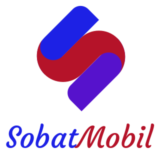What’s Machine Learning Operations Mlops?
Machine studying, a subset of synthetic intelligence (AI), empowers companies to leverage this knowledge with algorithms that uncover hidden patterns that reveal insights. Nonetheless, as ML turns into increasingly built-in into everyday operations, managing these fashions successfully turns into paramount to ensure continuous improvement and deeper insights. DevOps helps be sure that code changes are mechanically examined, built-in, and deployed to production efficiently and reliably. It promotes a tradition of collaboration to attain sooner launch cycles, improved utility high quality, and extra efficient use of sources.
Options And Data Checks
With the surroundings arrange and dependencies put in, we will now transfer on to the model training part. Every part feeds into the others, making certain a cohesive and iterative approach to building ML-powered systems. Supervised machine studying is the commonest, but there’s additionally unsupervised studying, semisupervised learning and strengthened studying. In reality, per a 2015 paper from Google, the machine studying code is only a small portion of the general infrastructure wanted to maintain a machine learning system. Produce highly effective AI options with user-friendly interfaces, workflows and entry to industry-standard APIs and SDKs. MLOps streamlines mannequin creation to enhance effectivity, boost accuracy, speed up time to market and guarantee scalability and governance.

MLOps is the overarching idea covering the core tools, processes, and greatest practices for end-to-end machine learning https://www.globalcloudteam.com/ system growth and operations in manufacturing. GenAIOps extends MLOps to develop and operationalize generative AI solutions. The distinct attribute of GenAIOps is the management of and interplay with a foundation mannequin.
- Well-liked libraries utilized in MLOps include NumPy, TensorFlow, Keras, and Pytorch.
- This article offers a detailed overview of machine learning operations (MLOps), highlighting their significance, ideas, advantages, best practices, and steps for efficient implementation.
- Genetic algorithms, then again, simulate the method of pure choice, by which symbols are “bred” and refined by algorithms to create increasingly efficient packages.
- At the core is setting up a documented and repeatable sequence of steps for all phases of the ML lifecycle, which promotes clarity and consistency throughout different groups concerned in the project.
It aims to maneuver machine studying models from design to manufacturing with agility and minimal cost, while also monitoring that fashions meet the anticipated goals. MLOps (Machine Studying Operations) is the practice of streamlining the development, deployment, and maintenance of machine learning what is machine learning operations fashions in manufacturing. It integrates DevOps ideas with machine learning workflows to ensure scalability, reliability, and efficiency. MLOps improves collaboration amongst knowledge scientists, engineers, and enterprise teams.
Automating model era and deployment results in speedier time-to-market and cheaper operating expenses. Knowledge scientists can shortly investigate an organization’s data to provide further enterprise worth to everybody. By using MLflow, we will simply observe model versions and manage adjustments, ensuring reproducibility and the flexibility to pick the most effective model for deployment. As Soon As the information is stored within the knowledge directory, the following steps include cleaning, processing, and model Mobile app coaching.
Fostering collaboration between groups accelerates innovation and reduces redundant work. In healthcare, MLOps permits for steady model training with new affected person information. This helps in growing diagnostic fashions that may detect illnesses early and accurately, with efficiency monitored to make sure precision.
Inefficient Instruments And Infrastructure
Once the ML engineering tasks are completed, the group at massive performs continuous maintenance and adapts to changing end-user needs, which could call for retraining the model with new knowledge. MLOps paperwork reliable processes and governance methods to forestall issues, cut back development time and create better fashions. MLOps makes use of repeatable processes in the identical way companies use workflows for group and consistency. In addition, MLOps automation ensures time is not wasted on tasks which are repeated each time new models are built.
Moreover, LLMs provide potential advantages to MLOps practices, including the automation of documentation, help in code critiques and improvements in information pre-processing. These contributions might considerably enhance the efficiency and effectiveness of MLOps workflows. Whereas ML focuses on the technical creation of fashions, MLOps focuses on the sensible implementation and ongoing administration of these models in a real-world setting.
Put AI to work in your business with IBM’s industry-leading AI experience and portfolio of solutions at your side. We surveyed 2,000 organizations about their AI initiatives to discover what’s working, what’s not and how one can get forward. The success of MLOps hinges on a well-defined strategy, the right technological tools and a culture that values collaboration and communication.

The machine studying lifecycle is advanced and contains multiple elements similar to knowledge import, information preparation, mannequin coaching, model tuning, model deployment, mannequin monitoring, explainability, and more. An ML project calls for collaboration throughout groups, ranging from knowledge engineering to knowledge science to ML engineering. Sturdy operational rigor is key for preserving these processes synchronized and operating together. Efficient MLOps practices involve establishing well-defined procedures to ensure efficient and reliable machine studying development. At the core is establishing a documented and repeatable sequence of steps for all phases of the ML lifecycle, which promotes clarity and consistency across different groups concerned in the project.
This entails streamlining the whole ML workflow and eliminating guide intervention at each step. By identifying patterns and tendencies, ML models drive strategic decisions and enhance operational efficiency. Nonetheless, building and deploying these models at scale can have limitations, such as maintaining consistency, managing infrastructure, and guaranteeing clean staff collaboration. This is the place a structured strategy, like machine studying operations (MLOps), turns into critical.
